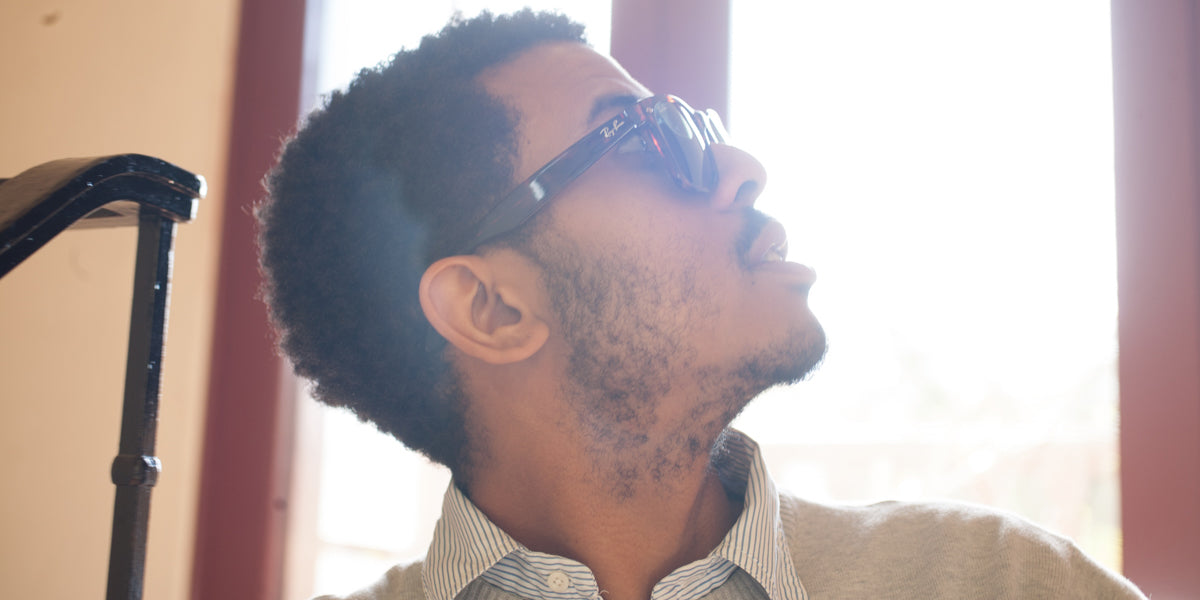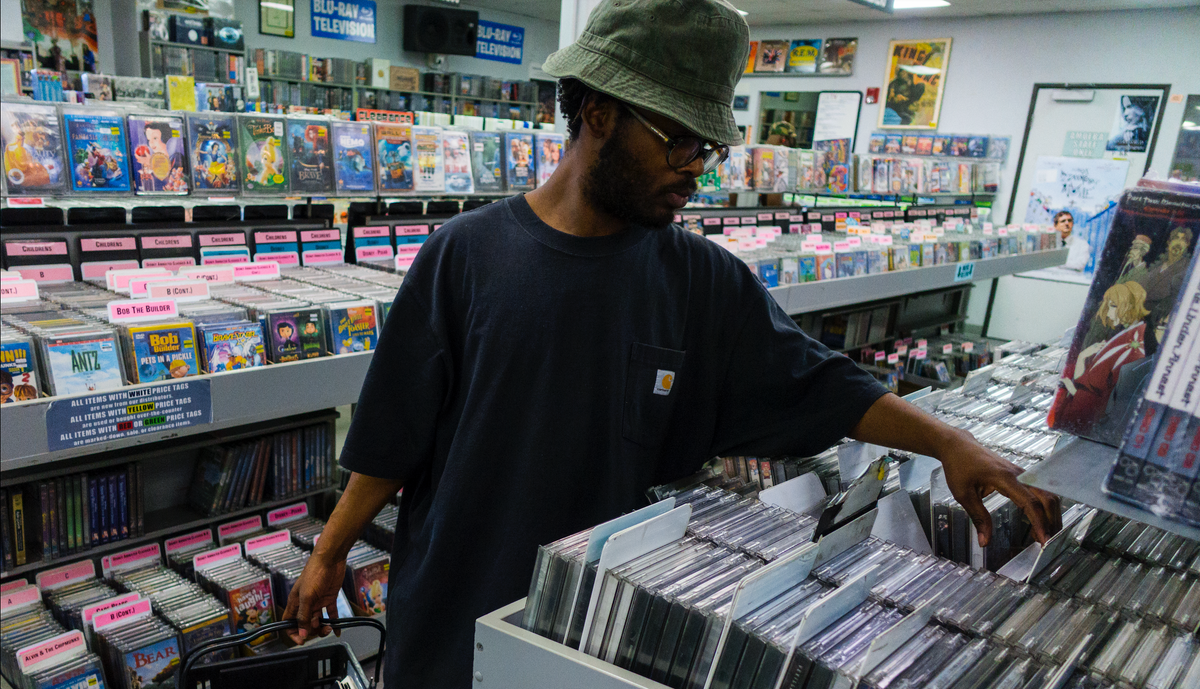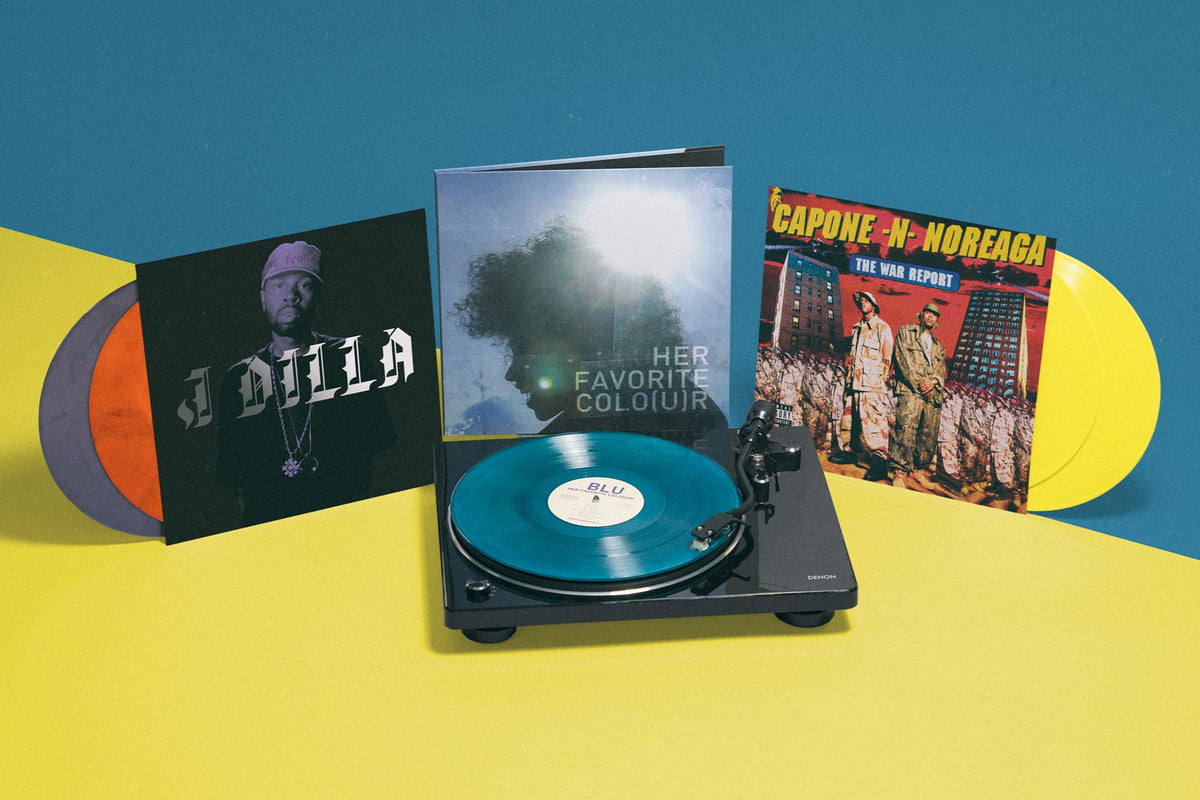On J Dilla, Abundance and ‘The Diary’
An essay about the bravado, mess and brilliance of Dilla’s lost album
Though J Dilla is praised by the likes of producers Kanye West, Pharrell Williams and Q-Tip, at his creative peak — and after his untimely death in 2006 — he was seen as an underground marvel and one of music’s best-kept secrets. He didn’t have the high profile of his peers, yet he kept shifting the frequencies of hip-hop and soul, crafting sounds that inspired them. Still, he didn’t get substantial credit until he was gone, leaving his fans to wonder what would’ve happened if he had major-label support. He almost found out in the early 2000s.
By the mid-’90s, Dilla was already beginning to earn his stripes. He formed the duo First Down with rapper Phat Kat and landed a short-lived deal with a label called Payday Records, and he founded Slum Village with T3 and Baatin, two other gifted MCs from his neighborhood in Conant Gardens, Detroit. He also met A Tribe Called Quest cofounder Q-Tip, and began to produce with him under a collective called The Ummah. Dilla developed a hyper-creative production style that built upon the work of predecessors like Tip and Pete Rock: He would wrap old soul and jazz samples around programmed drums that sounded like they were birthed from live sessions. And while his work with Slum Village was more hedonistic, his sound fit alongside the thought-provoking Afrocentric hip-hop that was gaining traction around then, largely as a defiant rebellion against the glossy, violent gangsta rap that was establishing the genre as a sales powerhouse.
When Common connected with him in 1999 and enlisted his talents for his breakthrough album Like Water for Chocolate, it became clear to the Chicago lyricist’s team that their chemistry was something special. The records they were creating together — especially “The Light,” which would later earn a Grammy nomination for Best Rap Solo Performance — planted the seeds for an accessible version of the conscious, soulful hip-hop that Common had been building toward. Plus, Dilla had already built a rapport with other members of the collective that would become known as the Soulquarians, which also included Erykah Badu and D’Angelo — two household names in neo-soul. That, along with the release of Slum Village’s Fan-Tas-Tic, Vol. 2 — which showcased and proved Dilla’s skills as a visionary — only accelerated things.
It was clear that Dilla was one of the most gifted free agents in the industry. So Common’s manager, Derek Dudley, pitched himself as ad hoc representation for Dilla and convinced MCA’s then-A&R Wendy Goldstein to present him with a life-changing three-part deal: It would include a solo album, a label deal for Dilla’s imprint McNasty Records, and a publishing deal that would have him contributing his production for other artists at MCA at a fixed rate. Dilla was already earning a decent living, but this was a real chance at rap superstardom and mogul status. The label funded equipment for Dilla to build his own studio, he signed longtime friends Frank-N-Dank to his label, and he got to work on their album and his own. “That was the happiest that I ever saw him in his life, because he felt like he was being recognized amongst his peers, and in the industry,” said longtime friend Michael “House Shoes” Buchanan.
“The bar was raised,” Buchanan continued. “Everybody whose livelihood relied on Jay Dee … the higher he got within the industry, a lot of them felt that the greater chances of something connecting, the stars aligning on something else would happen.”
But when J Dilla was preparing to create his MCA debut, he took a different approach. He didn’t use the warm, accessible sound that MCA executives had fallen in love with. Instead, he saw his solo album, then titled Pay Jay, as a chance to push his skills as a rapper to the fore, and placed his vocals over beats from producers he respected — Madlib, Hi-Tek, Nottz, Pete Rock and others.
The decision was two-fold, depending on who you ask. On one hand, Dilla saw other producers beginning to adopt his sound. And though he was inclined to shift his sound anyway, there was even more incentive when he saw his aesthetic catch on so noticeably.
“Dilla kind of took that personally,” said Dan Charnas, author of the definitive biography Dilla Time: The Life and Afterlife of J Dilla, the Hip-Hop Producer Who Reinvented Rhythm. “He felt like people were copying him. He doesn’t understand that he’s invented something so big that it can’t help but be copied. It’s just too big of an idea.”
But it went beyond wanting to stay original sonically. Being the primary rapper on his own album gave him a lighter workload, and a bigger chance to showcase just how nice he was on the microphone. “Jay was a very confident rapper, one of the most confident rappers,” Buchanan said. “People talk about his refrigerator, how everything inside would be like perfect with lines and labels facing the same way. He was that way about the raps, too.”
“He’d make a beat and then he’ll go straight to the microphone and try to come up with different ideas, cadences and rhythms,” said Karriem Riggins, Dilla’s friend and collaborator. “When you really know him, that’s the side he projects as an MC. It can be flamboyant or braggadocious. And with that, you hear the inspiration of the most rhythmic cadences you’ve ever heard. He had the flavor to be able to say things that were super simple but because it’s so syncopated, it’s so hip. He had the best of both worlds of just having rhythm and cadence and wordplay.”
Dilla didn’t move the bar for MCA. Along with changing the approach to his own album, he also switched it up for Frank-N-Dank’s album, 48 Hours. He had produced an initial version of the record that floored MCA execs, but after hearing the sample-free, financially solvent beats that Dr. Dre was excelling with in the late ’90s, he decided to scrap it and make a whole new batch of beats for it. Also, as Charnas pointed out in Dilla Time, despite investing hundreds of thousands of dollars into building his own studio, he was still taking a limo to record in Studio A, the spot where he had recorded so many gems before landing the MCA deal. And he wasn’t keeping the budget to himself, either — he was paying the producers he enlisted handsomely, too. He also turned down major placements with other acts, specifically Justin Timberlake, who had already sold millions of records with *NSYNC and was preparing for his own solo stardom.
In short: Dilla was blowing major-label money and not giving the return they were expecting. Wendy Goldstein was confused by the new version of 48 Hours, but she eventually left the label for a different job. The executives who took over didn’t see the benefit of funding Dilla’s endeavors after he had already spent so much, so Pay Jay got shelved. “He painted himself into a corner, business-wise,” Charnas explained. “That era was all about shiny, commercial music, and James’ stuff was a little different.”
Now matter how bothered Dilla was about his album being shelved, he didn’t dwell on it too much. He would still work on other brilliant works over the next few years, moving to Los Angeles and recording what would later become Ruff Draft, Champion Sound with Madlib as the duo Jaylib, and eventually The Shining and Donuts. But Charnas thinks that Dilla may have internalized the experience more than it seems, since so many other traumas happened around the same time: he fell out with Buchanan, he had a major argument with Frank Bush (of Frank-N-Dank) over the changes to their album, and police broke into his home after neighbors reported smelling marijuana smoke. And then his health began to deteriorate. Dilla died of complications from a blood disorder and lupus at the age 32 in 2006.
Two years after Dilla’s death, an unfinished, low-quality version of Pay Jay leaked online. Eothen “Egon” Alapatt, the creative director for Dilla’s estate and former manager of Stones Throw Records (the home of later Dilla records like Jaylib’s Champion Sound and Donuts), led the campaign for a formal release through Dilla’s Pay Jay Productions, Inc. imprint. He had spoken to Dilla when the artist was alive about ensuring the album would see the light of day, and he wanted to keep his word — even if it took nearly a decade of litigation, tracking people down and meticulous studio magic to revive the old sessions. The musician came alive through these songs; the quiet, reserved James Yancey gave way to the chest-thumping J Dilla in the music that was uncovered.
“He always said that when he got on the mic he had an alter ego,” Riggins said in a 2016 video. “The Dilla that we knew away from that was very humble, very quiet. So, he definitely went into character on the mic, and would battle anybody. And would have the best verse on most of the joints he would ever collab with.”
His bravado is clear on The Diary. He gets drunk off brown liquor in the club on “The Anthem,” the bass-rattling “Trucks” pays homage to unapologetically flossy rims and sound systems, and “The Introduction” waxes poetic on weed, women and jewelry. Such topics demand presence to deliver them convincingly, and Dilla brings it in spades with a brawny, authoritative voice and a bouncy, staccato-styled flow that showed an adroit understanding of any beat that he selected.
While he leaned boastful on the mic, that doesn’t mean that he simply spit basic, straightforward raps. “The Shining Pt. 1 (Diamonds)” gets conceptual as Dilla speaks directly to a diamond as if it’s a woman, he personifies luxury whips ecstatic to be wheeled around the hood on “Drive Me Wild” and he gets in peak petty mode on “The Ex” as he clowns a former flame for losing out on him. On the title track “The Diary,” Dilla uses a single verse to paint his backstory, diving into his familial history and memories of falling in love with music as a child.
Perhaps some of his most focused raps were on “Fuck the Police.” He extracts the drum break and violin from René Costy & His Orchestra's 1972 track “Scrabble,” then adds in his own shuffling percussion, for a set of angry, confrontational bars that call out corrupt, trigger-happy cops and encourage oppressed Black people to fight back against them. “And see we got these fake cops / They thought he had a gun / Made a mistake cops,” he raps. “We can lose a few of ’em, we’ve got enough of ’em.” MCA wouldn’t allow the song to be placed on the record, so Dilla released it with the indie label Up Above Records instead, with album art that depicted Rodney King, Amadou Diallo and Mumia Abu-Jamal — a trio of Black figures whose tragic stories all illustrated the need for the song in the first place.
There were additions made in his wake, as well. Dilla never got to work with his then-MCA labelmate Snoop Dogg when he was alive, but he shouted out the Doggfather and Kokane on a song called “Gangsta Boogie,” and the version that appears on The Diary has both West Coast legends contributing vocals. Nas also raps alongside posthumous Dilla vocals on “The Sickness,” over a Madlib beat that originally appeared on Champion Sound.
Despite the mess surrounding the release of The Diary, it’s still an essential part of his story. “When we listen to it, we are hearing a producer reckoning with how to become an artist,” Charnas said. In the end, The Diary represents Dilla’s burgeoning freedom: It was the last album he wanted issued during his lifetime, and the best representation of what he was becoming as a rap star. Throughout this album and Dilla’s career as a whole, he lived abundantly and made music his way.
William E. Ketchum III is a journalist dedicated to covering the intersection of music, culture and society. His work has appeared in outlets including VIBE, GQ and NPR.
Related Articles
Join the Club!
Join Now, Starting at $36Pages







